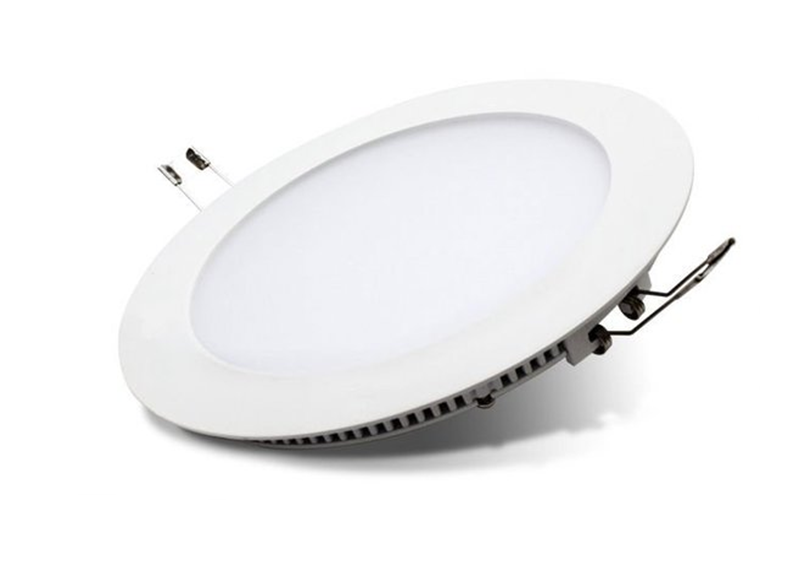Lots of the issues that affect the performance of LED panels are common to all LEDs, such as flickering, glowing, burnout and buzzing. For detailed data on tips on how to combat these typical problems with LEDs, take a look at our article How you can Stop Your LEDs from Flickering, Buzzing, Glowing and Burning Out.
There are some problems that specifically affect LED panels. Here’s more regarding ceiling light panel [sources tell me] take a look at our web site. The content material on this page takes a better take a look at these:
Quick LED panel drawback detection
Problems with drivers and voltage conversion
Problems with poor insulation, ventilation and overheating
Problems with low quality LEDs
How to pick out a high quality LED panel
Problems with LED panels failing early
Quick LED panel problem detection
In case your LED panel is failing and you’re unsure of the fault, there’s a quick and diagnosis you are able to do. Try switching on the LED panel and verify the table beneath.
Common LED problems and their possible causes
Problem
Likely cause
The LED panel doesn’t illuminate at all
The LED panel flashes
Driver failure
If only a few of the LEDs within the panel are lit
LED failure
Detecting the issue and the probably trigger is just half the battle. Within the sections under, you will be capable of finding the options to these problems.
Problems with drivers and voltage conversion
An LED driver regulates the quantity of power that flows via a lighting system. Drivers convert the AC energy from the mains provide to the DC power required to run LED panels and ceiling light panel due to this fact stop energy surges. LED drivers are small units that are wired to the LED panel. They play the same function to ballasts in fluorescent lights.
Drivers are susceptible to overheating. Even drivers that work correctly can be affected by heat over time. However utilizing low cost, low high quality drivers or the fallacious driver will mean it is at greater risk of overheating sooner.
This is because the present flowing via the system isn’t stored at a continuing level, so the surplus heat generated impacts the driver’s efficiency.
– Voltage from the mains energy provide is (240v), a driver converts this to 12v or 24v to run the panel correctly. If the driver isn’t working correctly then it doesn’t convert this current and keeps the voltage at a relentless level. This means the bulb will flicker and the system won’t react to overloads which means the panels are at an increased risk of burnout.
– If your LED panel isn’t working at all then the most certainly purpose for this is faulty internal wiring where the wiring just isn’t linked to the driver appropriately.
– Although not technically a fault with the wiring, fitting dimmable LED panels with an incompatible dimmer swap will trigger flickering.
Solutions
– Ensure your LED panels are compatible with the circuits, power supply and light switches they are running off.
– Put money into back-lit or ceiling led panel light central-lit panels (where the LED chips are mounted onto the panel, quite than the sting of the panel), as these panels feature constructed-in drivers which may also help to reduce the issues with drivers outlined above.
– Ask an electrician to test that the wiring within the lighting system is fitted accurately.
Problems with poor insulation, ventilation and overheating
LED panels have to be properly insulated to make sure the heat they produce is dissipated correcting so they don’t overheat. Quality LED panels are fitted with a heat sink made from a conductive steel (normally aluminium) which transfers excess heat away from the panel. If this heat sink is low high quality, poorly fitted or not fitted in any respect then the excess heat could cause the LED chips in the panel to burnout.
Not all LEDs are appropriate to be fitted into enclosed fixtures. Fitting an unsuitable LED into an enclosed fitting can cause it to overheat as the bulb won’t have the suitable heat sink. This isn’t as much of a problem with LED panels as they are usually designed to fit in enclosed fixtures, however, it’s at all times price checking the panels are appropriate to be put in into recessed fittings.
– Poor high quality or faulty heat sinks could cause LED panels to overheat and burnout.- If the LED panel driver is faulty then this can also call the panel to overheat (see problems with drivers and voltage conversion above).
Solution
– Only buy LED light panel panels with a appropriately fitted aluminium heat sink. Ensure the panel is designed to be put in into a recessed fitting.
Problems with low quality LEDs
LED panels are more expensive than conventional fluorescent tubes and because of this customers could choose low-cost, low quality LEDs and anticipate the identical performance from them as the leading manufacturers. Low quality LED panels typically function inferior elements that aren’t examined properly.
LED panels feature a variety of components; if any of these components are low high quality or defective it may possibly have an effect on the overall performance of the LED panels.
Problems
– Frame-usually fabricated from aluminium, the frame accommodates the sunshine inside the panel. – If the frame is just too gentle or is product of a cloth aside from aluminium (low-cost LED panels usually characteristic a plastic body), then this might create excess heat and enhance the chance of burn out from overheating.
– Low quality chips could cause a number of problems including the panel turning into dim or the colour high quality being compromised.- If low quality LED chips are utilized in a panel this can produce a ‘blue’ hue which could make a room look cold.
– If it’s not fitted accurately then this will impact on the amount of gentle and the angle of the sunshine reaching the diffuser.
– A low high quality diffuser, made from acrylic or PMMA rather than polycarbonate, won’t distribute gentle as evenly.- Overtime, plastic diffusers can discolour on the edges and switch yellow, decreasing the quality of mild produced by the LED panel.
– Issues with the reflector plate can cause glare.
– A poor high quality heat sink will mean not sufficient heat is dissipated from the LED chips which could cause the chips to burnout.- Cheap plastic heat sinks don’t work as effectively as metal heat sinks and may cut back the life expectancy of the LEDs within the panel.
– The higher the again cowl fits the body, the higher the heat dissipation which implies the panel is likely to final longer.
It’s very difficult to establish whether an LED panel is high or low quality until it is installed. You won’t necessarily know you’ve a low high quality LED till it burns out shortly or produces poor high quality mild for example.
Solution: How to pick out a top quality LED panel
– Choose a panel that is at least £15-30 or £30 – 50 for greater finish. In the case of LED panels value does indicate high quality. Panels under £12 will go yellow, ripple or warp much faster.
– Avoid panels that only have a two yr guarantee. They only have a two year guarantee as a result of they are not constructed to last! Good high quality panels will last longer than this.
– Choose a panel that has a mild guide plate made out of acrylic (PMMA) or methyl styrene (MS).
– Choose a panel that’s completed with powder coating versus paint.
– Search for a well-constructed body.
– Choose a trusted brand. There are many them on the market, listed here are only a few of our favourites: – Britesource
– Philips
– Osram
– Toshiba
Methyl styrene is one of the best materials to choose for the sunshine information plate (LGP)
There are a couple of minor indications of quality comparable to a panel that is completed with powder coating slightly than paint and a well-constructed body however, the true marker of high quality comes down to the material used to make the light information plate.
There are three supplies commonly used to make an LGP:
– PMMA
– Polystyrene (PS)
– MS
We suggest selecting an LGP made from MS.
PMMA has the most effective gentle transmission and durability however can also be probably the most expensive – it is a excessive-quality product, however not essentially the most inexpensive.
PS offers good transmission, however it tends to show yellow over time due to wear and tear and the results of heat. It is a well known challenge within the industry and is often why these panels have a warranty of solely 2 years. Over time they may also ripple of become warped because they aren’t sturdy sufficient to handle normal heat publicity. It’s the most affordable option of the three, but we’d consider it a low-quality choice.
MS is a mixture of PMMA and PS. It supplies superb mild transmission and can also be durable, but at a lower price, is the most price-effective answer.

Problems with LED panels failing early
Overview
LEDs are extremely in style as a result of they are recognized to final for much longer than commonplace halogen or fluorescent bulbs. Some LEDs can final over 15,000 hours, that means they should last an incredibly long time. This form of longevity makes LED value price-effective and environmentally pleasant.

